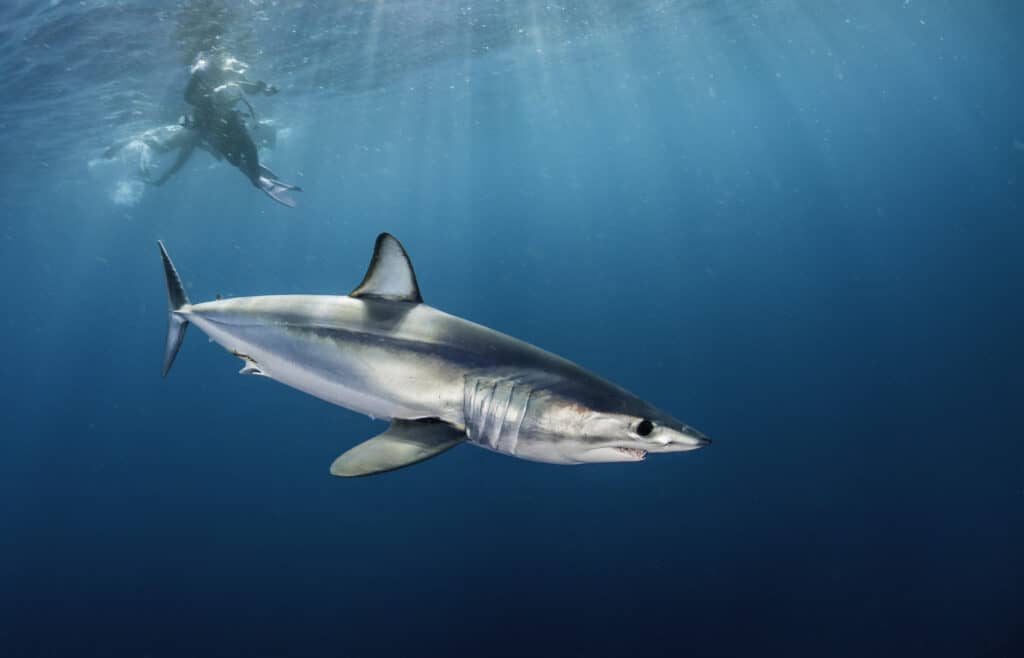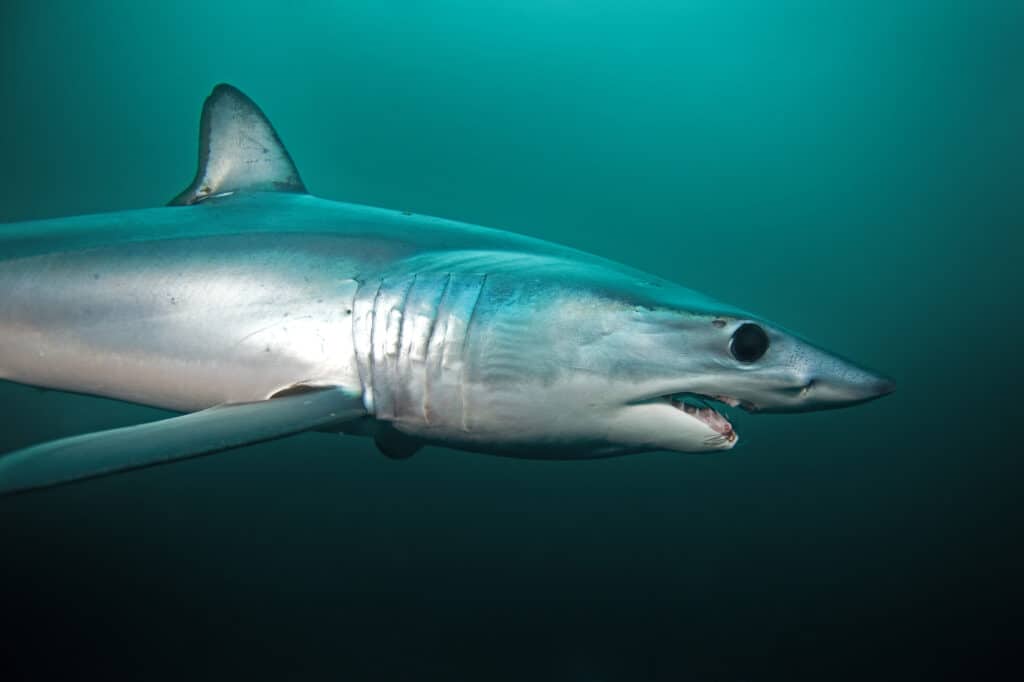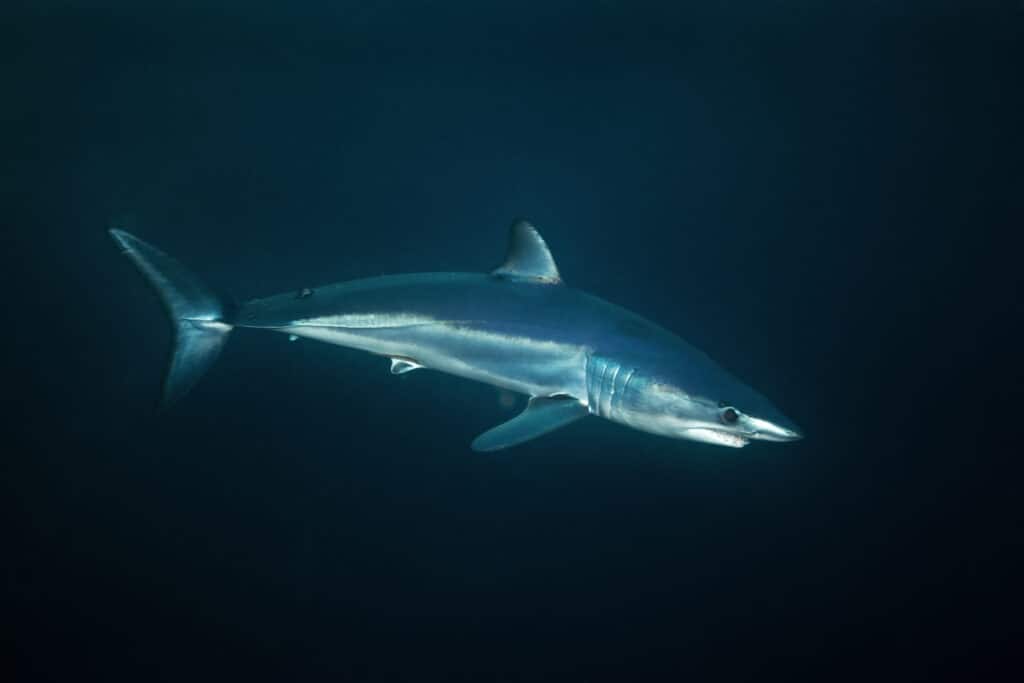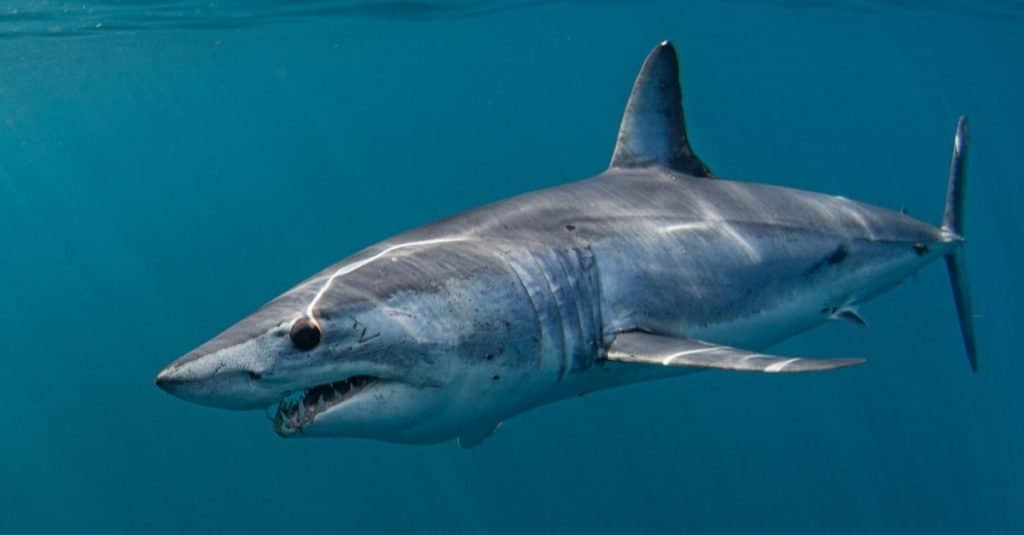Key Points:
- There are two species of mako shark: the shortfin mako and the longfin mako. Males grow to about nine feet long, while females can reach more than 14 feet at their largest.
- According to the International Game Fish Association (IGFA), the largest mako shark ever recorded was a female, weighing 1,221 pounds and measuring more than 11 feet long, caught in 2001 off the coast of Chatham, Massachusetts.
- Unofficially, the largest mako caught is thought to be one weighing 1,323 pounds and measuring more than 11 feet long. As this specimen is believed to have been caught by more than one person, the IGFA does not consider it a record.
Mako sharks are some of the fastest fish in the ocean, even faster than the famous great white shark, blue whale, or killer whale. Makos, also known as bonito sharks or blue pointers, are the cheetahs of the sea. The largest mako shark ever recorded is nothing short of incredible, both for its size and for what it represents.
Here, we’ll find out just how big the largest mako shark ever recorded was and why there’s some debate about what counts as an official world record. Along the way, we’ll learn more about mako sharks as a species, including whether or not they’re a threat to humans. Then, we’ll find out if these fascinating hunters of the ocean are at risk of extinction. Finally, we’ll learn just how important sharks are to the marine ecosystem and what you can do to save them.
Read on to learn more about the largest mako shark ever recorded!
Getting to Know the Mako Shark

There are two species of mako shark: the shortfin mako (
Isurus oxyrinchus) and the longfin mako (
Isurus paucus).
©wildestanimal/Shutterstock.com
Mako sharks are some of the fastest predators in our oceans today. They live in tropical and temperate waters all over the world. Young makos spend time close to shore while mature adults swim the open oceans in search of game. They’re slow to mature, with females taking around 20 years to become sexually mature. And they have only a few pups at a time.
Size and Appearance
Mako sharks are over two feet long at birth. Males grow to about nine feet long, while females may measure over 14 feet at their largest. Mako sharks have streamlined, narrow bodies with pointed noses and large eyes. Their tails are incredibly powerful and propel them through the water as they chase some of the fastest fish in the ocean.
Diet and Behavior

Mako sharks use their speed and powerful bite force to catch prey.
©Martin Prochazkacz/Shutterstock.com
Mako sharks have many rows of narrow, needle-like teeth designed for holding onto slippery fish. They mainly eat mackerel, tuna, swordfish, and bonito, in addition to cephalopods like squid and octopus. They’ve also been recorded eating seabirds, sea turtles, other sharks, and even porpoises. But speed isn’t all they have; mako sharks also have some of the strongest measured bite forces of any shark.
Makos almost never stay in one place. Instead, they spend their lives migrating up and down coasts, to the open ocean, and back close to shore. They follow the big game fish and can often be seen fully breaching the water’s surface as they hunt.
Are Mako Sharks Dangerous to Humans?
Though they can grow to lengths of over 10 feet (for females), mako sharks rarely attack humans fatally. There have only been 10 recorded instances of unprovoked attacks on humans by mako sharks, one of which resulted in a fatality. Your chances of having a negative interaction with a mako shark are small.
The Largest Mako Ever Recorded: Officially

The largest mako shark weighed 1,221 pounds!
©Martin Prochazkacz/Shutterstock.com
According to the International Game Fish Association (IGFA), which keeps records of the largest landed fish in the world, the largest mako shark ever recorded was caught in 2001. It was hauled in off the coast of Chatham, Massachusetts, by a fisher using 130-pound line. The shark, a female, weighed 1,221 pounds and likely measured more than 11 feet long.
However, the Massachusetts mako isn’t the only large mako shark ever landed off the coast of the United States. Let’s take a look at another giant mako that, for bureaucratic reasons, cannot be included in the IGFA’s world record list.
The Largest (Unofficial) Mako Ever Recorded
In 2013, a California fisher landed and killed a mako shark even bigger than the official largest mako ever recorded. The California mako weighed in at 1,323 pounds, and measured over 11 feet long. By weight, it is likely the heaviest mako ever recorded. But, because the fisher may have had help hauling the giant fish in, it cannot be counted as the official IGFA largest mako ever recorded. Still, the legend of this giant mako lives on.
Are Mako Sharks Endangered?

Like many species of shark, mako sharks are slow to reproduce.
©Al McGlashan/Shutterstock.com
As of 2019, shortfin mako sharks have been classified as Endangered. Previous to that, when the world record-holding mako and its unofficial competitor were fished, makos were listed as Vulnerable. Today, because of their slow rate of reproduction and maturation, mako sharks are uniquely vulnerable to extinction. Like many species of sharks, their population has dipped in recent decades due to overfishing, death from bycatch, pollution, and the demand for shark fin soup.
Why Sharks Are Important and What You Can Do to Help Conserve Them
Today, shark populations have fallen by much as 90%. That means that there are far fewer sharks, and fish in general, swimming in our oceans today than there were decades ago. Sharks are both apex predators and keystone species, so their disappearance from our oceans could have disastrous effects for the entire food web. Our marine ecosystems depend on sharks, like the mako shark, which is why it’s so important to conserve them now, before they disappear.
One of the first steps you can take is to educate yourself about sharks. Just learning that they are not the vicious maneaters popular culture has made them out to be can make a world of difference. Avoid single-use plastics, as many of these end up in our oceans, and choose sustainable seafood options. Finally, learn about the shark fin soup industry, and avoid eating shark meat.
The photo featured at the top of this post is © Xavier ELIAS Photography/Shutterstock.com
Thank you for reading! Have some feedback for us? Contact the AZ Animals editorial team.







